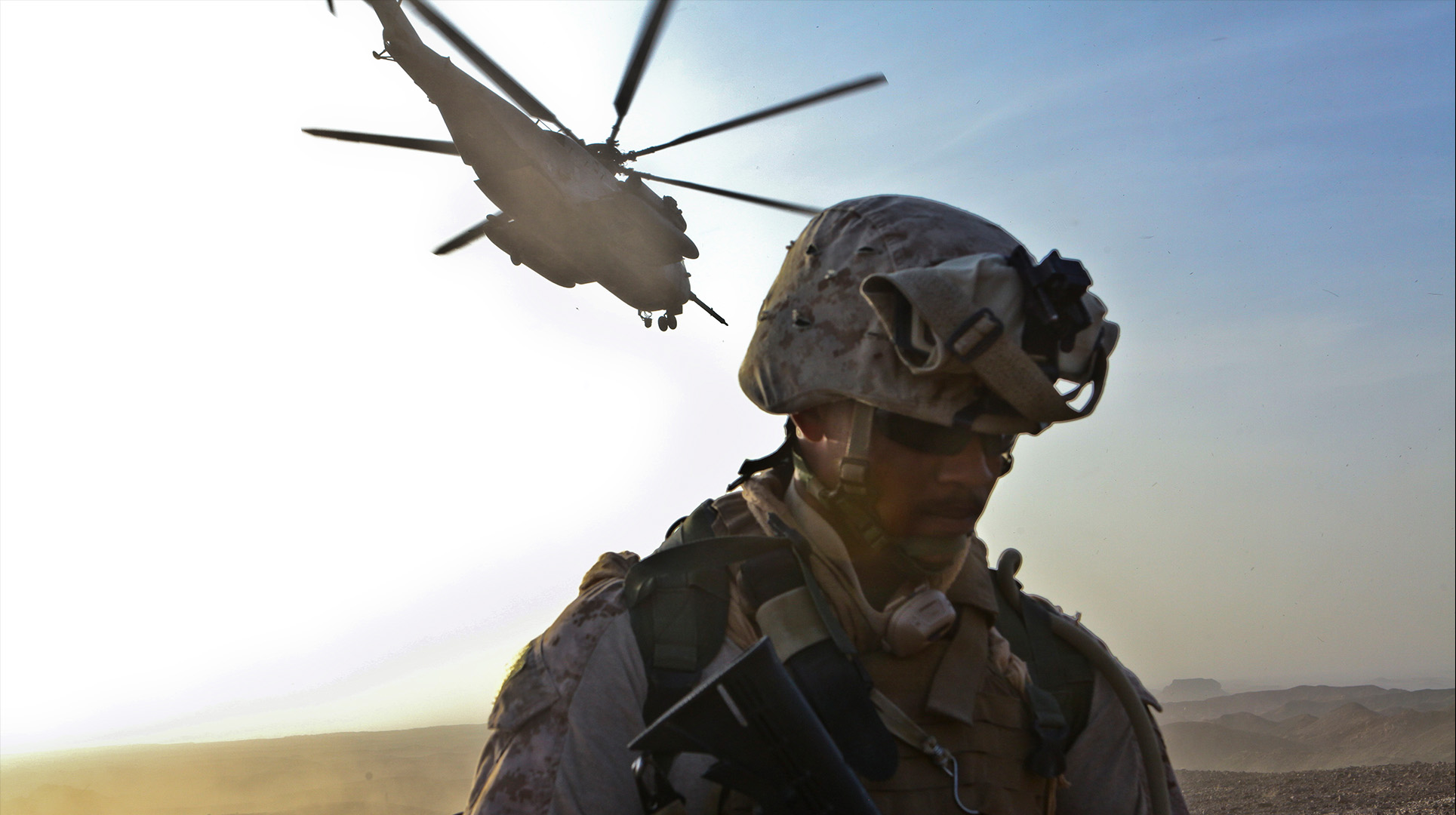

Five Marines are confirmed to have died when their CH-53E Super Stallion helicopter crashed on Tuesday in California, Corps officials announced on Thursday.
The Marines were assigned to Marine Heavy Helicopter Squadron 361, Marine Aircraft Group 16, according to the 3rd Marine Aircraft Wing. Their identities have not yet been released pending next of kin notification.
Efforts to recover the five Marines are ongoing, a statement from the wing says.
“It is with a heavy heart and profound sadness that I share the loss of five outstanding Marines from 3d Marine Aircraft Wing and the ‘Flying Tigers’ while conducting a training flight last night,” Marine Maj. Gen. Michael J. Borgschulte, commanding officer of the 3rd Marine Aircraft Wing, said in a statement. “These pilots and crewmembers were serving a calling greater than self and were proud to do so. We will forever be grateful for their call to duty and selfless service. To the families of our fallen Marines, we send our deepest condolences and commit to ensuring your support and care during this incredibly difficult time.”
Little information has been publicly released about the circumstances of the crash, which is under investigation. The helicopter was flying from Creech Air Force Base, Nevada, to Marine Corps Air Station Miramar, California, on Tuesday when it was reported overdue.
Subscribe to Task & Purpose today. Get the latest military news and culture in your inbox daily.
Civil authorities later found the crash site on Wednesday morning in Pine Valley, California.

President Joe Biden issued a statement on Thursday saying that he and his wife Jill were both heartbroken by the loss of the five Marines, and they extended their condolences to the Marines’ families.
“Our service members represent the very best of our nation—and these five Marines were no exception,” Biden said. “Today, as we mourn this profound loss, we honor their selfless service and ultimate sacrifice—and reaffirm the sacred obligation we bear to all those who wear the uniform and their families.”
CH-53Es are some of the oldest in the Marine Corps aviation fleet, first entering service in 1981. According to a 2017 report from Vertical911, a helicopter trade magazine, the CH-53E requires 40 hours of maintenance for every hour of flight. The Marines had shifted much of their heavy lift flying to MV-22 Ospreys while the first of a newer, more-capable version, the CH-53K, was delivered to the Marine Corps in 2022.
During the Marine Corps’ aviation crisis in the last decade, CH-53Es had the most serious readiness problems of all Corps aircraft. The mission capable rates for CH-53E helicopters dropped from 63% in 2009 to 28.5% in 2016, meaning that little more than a quarter of the Corps’ fleet of roughly 147 CH-53Es could fly on any given day.
An investigation into a January 2016 collision between two CH-53Es that killed 12 Marines aboard both aircraft found that the helicopter squadron to which the helicopters belonged struggled with readiness and maintenance issues, in part because the helicopter is no longer in production, adding the time it takes to secure spare parts.
But the CH-53E has been pushed back into more direct service in recent months after the Marines grounded all 350 of their Ospreys in December following a series of crashes.
The commander of the 31st Marine Expeditionary Unit recently told reporters that, during an extended deployment in the Pacific, his unit had to rely more on CH-53s and other heavy lift helicopters after the Osprey grounding, which followed a fatal Air Force Osprey crash in November that killed all eight crew members aboard the aircraft.
The latest on Task & Purpose
- Fired Navy Captain created ‘toxic’ climate, grabbed and struck crew on duty
- What’s the difference between Army Rangers and Green Berets?
- When a veteran lost his farm, fellow paratroopers came to the rescue
- Sergeant, it’s cold outside! How the Army is revising its wind chill rules
- Everything you need to know about Ranger School